From basic to advanced segmentation, these examples will show how retailers are doing it today.

From basic to advanced segmentation, these examples will show how retailers are doing it today.
Throughout my quarter of a century on this earth, I’ve had to come to terms with a sad fact: most eCommerce marketers don’t know what good customer segmentation looks like.
But don’t get me wrong. There are top-quality campaigns that are clearly driven by customer segmentation (spoiler alert: I’ll show you which ones later).
And then there are the others.
The email featuring male underwear sent to female customers. Nobody wants to see that.
The Google ad about bikinis showing up smack bam in the middle of winter. The Instagram campaign from a retailer that doesn’t ship to my location.
This is the sad truth of eCommerce marketing: the same campaign is released to everyone, targets few, and thus fails to resonate with anyone.
In order to have successful customer segmentation, you should be segmenting your audience by their demographics, psychographics, and on-site behavior.
This article will give you examples on how to do excellent customer segmentation to inspire your own strategy.
Customer segmentation is the process of creating sub-groups of your shoppers based on their shared characteristics.
Unlike personalization and targeting, segmentation happens after the fact because you use on-site data to optimize campaigns off-site.
Targeting and personalization happen before the fact because you need to set triggers so that your shoppers see the campaigns when they arrive.
Demographic segmentation looks at single variables that make your customers who they are on a societal level and then groups them together.

For example, A&F segment by gender with the same jeans campaign for both women and men.
What’s important to remember as you segment by demographic is that having the exact same campaign for both genders won’t work.
Instead, what you can take away from this A&F email is that they have dived into their customer profiles to see what trends appeal to their female customers (e.g., vintage) and what appeals to their male customers (e.g., fitted jeans) when it comes to selling denim.

An example of basic customer segmentation done right is this offer by H&M. Segmenting by age, H&M has ads that target back-to-school, primary school, and university students.
This particular one is delivered to their student target base. With the promise of a discount, this works well for the budget-friendly university student.
3. Socio-economic status
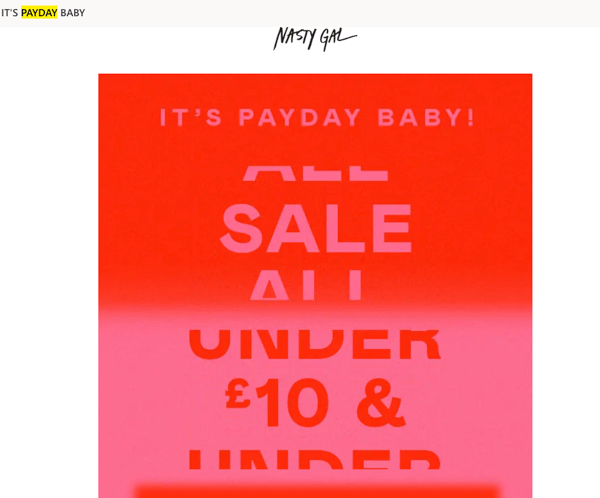
Nasty Gal’s email campaign has a pretty clear target segment: the young working-class professional waiting for payday (holler!).
Nasty Gal often targets millennials, but here they go one step further and target millennials by their socio-economic status to boost the email’s relevance.
This ends up working really well because they speak the language of their target-demographic whilst offering a sale that goes hand in hand with the idea of payday.

Harvey Nichols is famously a British store. Yet because of their wide international presence, customer segmentation is key. The above print ad is an example of how they segment by religion by using Ramadan to target their Muslim demographic.
Understanding who your customers are, what products they like, and what they believe are key pillars to becoming more relevant within different market segments..

Another clever way to carry out demographic segmentation is to see what jobs your customers have, and then deliver them with hyper-targeted campaigns that reference these.
Loft takes the same discount approach that usually reels in students, but targets teachers instead.
If you want to target a specific job function, you should keep in mind seasonality, and what will actually grab the attention of those specific customers. This Loft discount is for the Autumn holiday period when teachers are off work.
This goes a long way with their customers, who end up leaving positive reviews on the webshop.
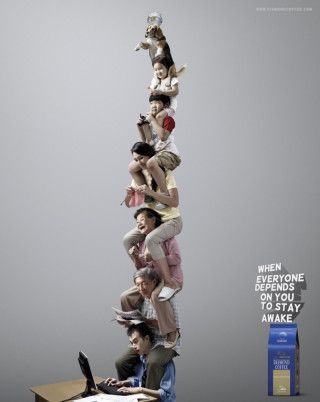
Marital status: a demographic variable that will segment your audience if they’re engaged, married, or even divorced.
Diamond Coffee does a fun job of targeting their married men demographic segment. This ad also elevates the product as a need-to-have for the busy family man. I feel for this guy, I really do.
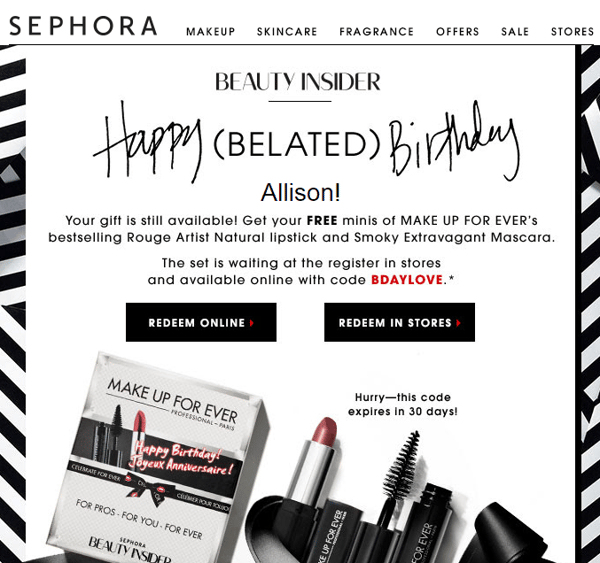
Birthdays are the best days (unless you’re Biggie and birthdays were the worst days).
You can’t lose if you can segment your audience by their birthdays, and then deliver them personalized emails. Sephora does this well. To make this work you should offer your customers the option to create an account so you can gather their birthday data.
Copy Sephora and give incentives or rewards for signing up (on birthdays or otherwise).
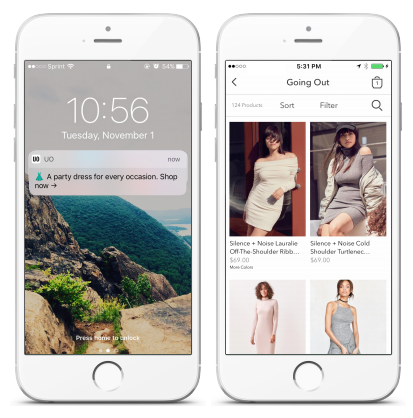
Geographic (location) segmentation is pretty straightforward: you group your audience together based on their country, region, city, state, or neighborhood.
You could also segment your market into rural, suburban, and urban market segments, as these targeted campaigns may serve these communities in different ways.
This usually goes hand in hand with eCommerce localization, which means:
For example, partnering with Appboy and PlaceIQ, Urban Outfitters used mobile location data to segment their audience by location. And according to their digital marketing director, this “location-specific marketing” led to a 146% campaign revenue increase.
Location, location, location! It’s important.
Psychographic segmentation is the process of grouping your customers together based on their shared psychological makeup.
At Crobox, we value the power of psychographics because it will make every eCommerce campaign more customer-centric. We’ve written extensively about examples of psychographic segmentation, but here’s a few more to give you a taster.

One psychographic variable is a lifestyle, and you can segment your audience accordingly. North Face, for example, has different lifestyle segments like, “explorer”, “traveler”, “hiker”, “extreme athlete” etc., with relevant products that they then push to each segment.
For example, the above ad targets the segment: “traveler/explorer”. Psychographics can determine your overall brand personality in line with your customers’ lifestyle. It’s a win-win.

Tommy Hilfiger isn’t popular for being a sustainable brand. Yet, because I usually browse for eco-friendly fashion and follow many environmentalists on IG, Tommy Hilfiger is able to target me with an ad presenting their recycled denim.
A shopper can value the environment, but they can also value pets, family, or healthy living. In each case, you should segment your customers based on the values they have, and show them that the products you have are in line with these.
More than 63% of consumers will buy from a brand that takes a stance or has a purpose. If you can show this in your campaigns this will go a long way. But you need to segment by value to have the biggest impact.
Behavioral segmentation groups your shoppers based on their online buying behavior. In other words, behavioral segmentation creates homogeneous categories of customers with similar purchasing intent or characteristics, like if they are high-spenders, looking for discounts, or recently churned.
This is one of the most important segments to look at for eCommerce, as it supplants your demographic and psychographic segments with data-driven profiles.
Each webshop looks at different behavioral segmentation variables, but across the board, you can usually rely on the RFM model.
RFM stands for Recency, Frequency, and Monetary, and is key to advanced behavioral segmentation. It’s a way to understand your shopper’s behavior based on:
But there’s a caveat: looking at one of these variables isn’t enough. If you have a high-spending customer who bought a lot one-off but never came back, then this shopper isn’t your “most” valuable customer.
It’s the frequent visitors, who spend enough, and keep coming back that will actually be your “high value” segment:
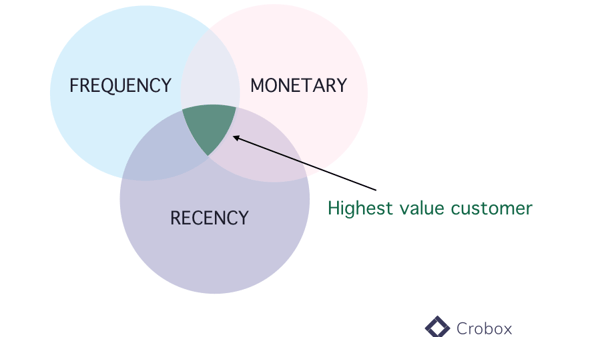
Nevertheless, there’s still value in each of these segments because there are different approaches to engaging them.
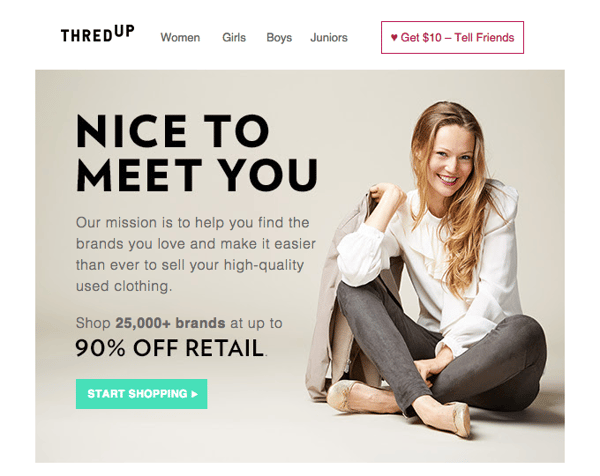
Segmenting by new customers is the first step in dividing your shoppers according to their lifecycle stages (or customer journey stages), as ThredUp does in this email campaign.
To establish segments-within-segment of your customer lifecycle data, you should be asking the questions:
So a segment within your new customer segment could look like: “one-time-purchasing-new-customers”.
Now imagine if you could have an extra grouping of “female-one-time-new-customers who also subscribed to your webshop”.
Just by supplanting your behavioral data with demographics you could already start recommending relevant products or personalizing your welcome emails.
For example, David Jones pushes this welcome email to the multi-variable segment we’ve just discussed and thus increases their relevancy.
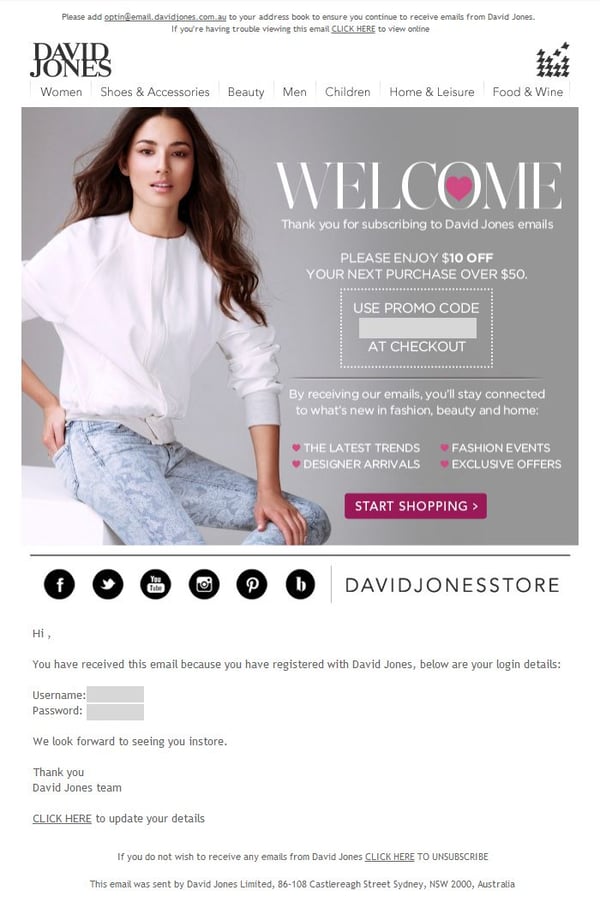
Repeat customers are those who have already purchased with you before and have come back - hooray!
Within this segment, you could create micro-segments based on your shoppers’ behavior that looks at repeat customers who have come twice or repeat customers who haven’t been back in a while.
Those who haven’t come back in a while are your “at-risk” customers and can be grouped into this segment so that you know to further engage them to get them hooked again.
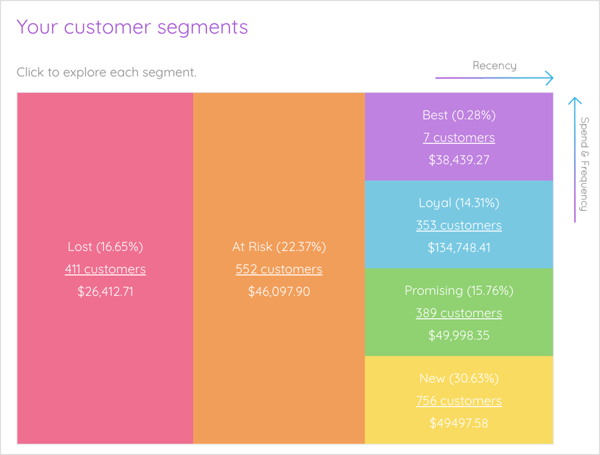
Source: Marsello
Loyal customers are also repeat customers, but way more active. They regularly engage with your brand, campaigns, and offers.
Depending on your loyalty strategy, sometimes these customers are members of a program or collecting points. That means that loyal low spenders are different from loyal high spenders - but each segment should be equally nurtured.
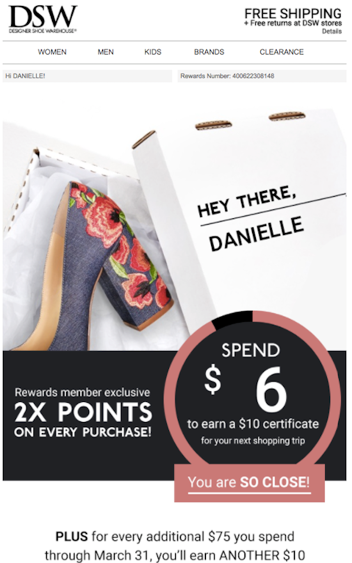
For example, DSW segments their loyal members, and then targets them with this email campaign, showing how much they need to spend to earn $10.
Loyal customers are the kinds of shoppers that could be brand ambassadors. They can even refer friends, which means you should look to reward this behavior. Give early access to certain products, identify tiers of loyalty within this segment, and then find creative ways to keep this segment happy and involved.
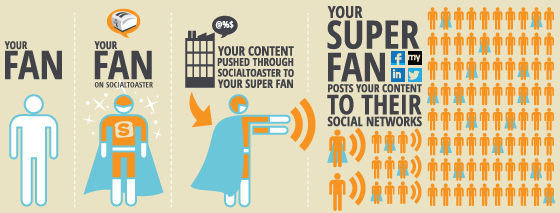 Source: Meltwater, “brand ambassadors”
Source: Meltwater, “brand ambassadors”
Using your RFM model, your champion customers are those who have bought recently, buy often, and spend the most (high RFM).
These are the customers you want to reward for coming back. So offer promotions, product advice or recommendations, or information that fits with their online behavior.
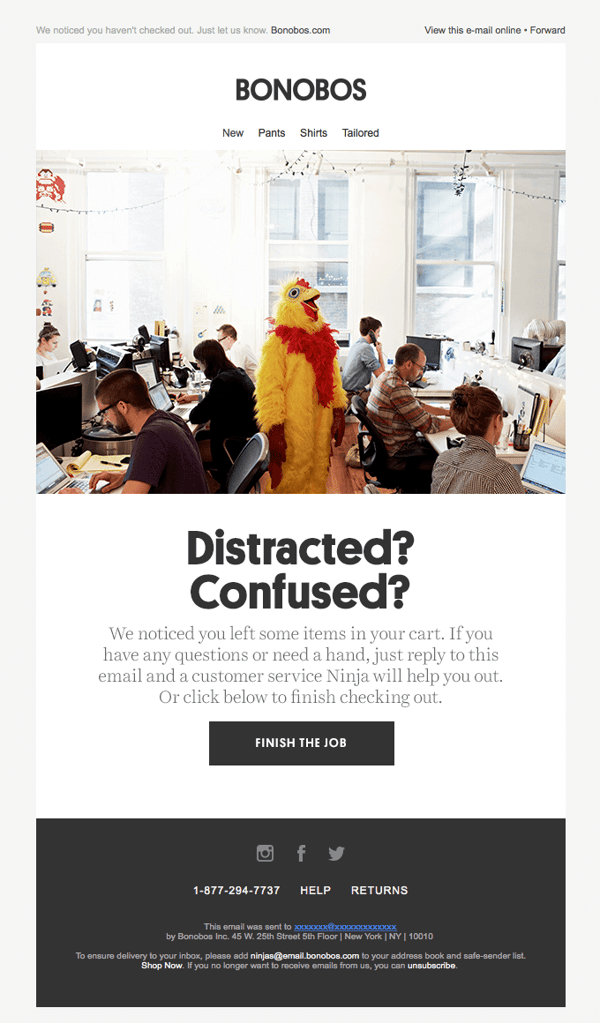
Another way to track behavior and segment accordingly is by analyzing which customers have left products in their carts without checking out.
We all know that abandoned carts are one of eCommerce’s biggest pain points, and a friendly reminder in the form of an email to drive customers back to your webshops won’t hurt.
Bonobos do this well by delivering their abandoned cart segment this original email.
Sometimes your CRM and RFM models will reveal interesting segments that you may not have thought of before. Reactivated customers are one of these interesting segments because these are the shoppers who have come back to your webshop from churn.
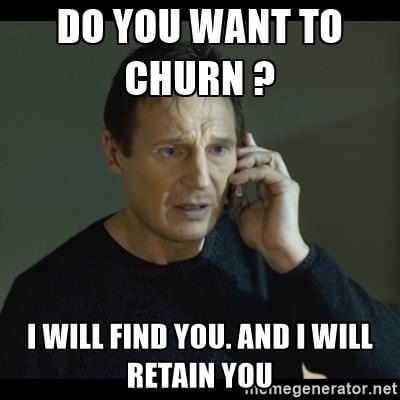
Churned customers coming back to your webshop may behave similarly to new customers. But by segmenting this group accordingly you will have better on-site personalization when they do eventually come back.
Another way to segment reactivated customers is by pin-pointing exactly when they churned (i.e., quick-churn or late-churn). When a person churned will help you understand why (what UX pain points made them leave?) - these segments have different relationships with your webshop, and thus different reasons for re-engagement.
Customers needing attention are your idle shoppers: ones that haven’t made a purchase in a while. Using your RFM model, these are the customers with high recency and monetary value, but low or decreasing frequency.
What do you do?
Well, for starters, you want to bring these customers back! Or at least tell them that you miss them. Show them that you understand their needs and provide incentives for them to come back to your webshop.
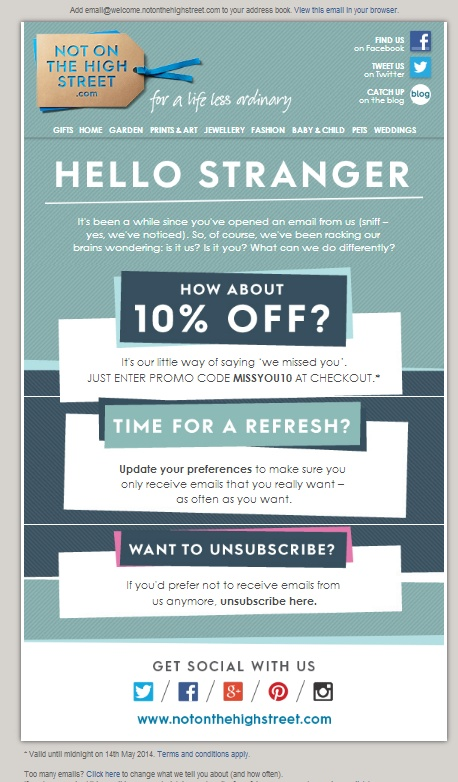
Not On The High Street’s email campaign targets this segment well: they offer a discount, and nudge people to either refresh their preferences or unsubscribe.
Ok, so you’ve segmented your customers based on their lifecycle stages (or customer journey stages). Now you should be looking beyond your site:
Where are these customers coming from?
This is important because if a lot of customers have been directed to your webshop from social media, you should consider optimizing your ads or even having a custom landing page.
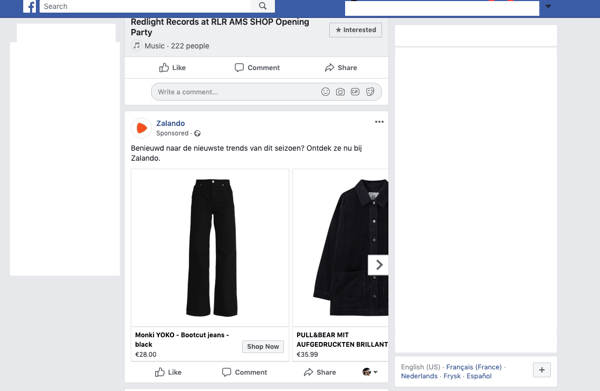
If I were to click on this ad by Zalando on Facebook, they could automatically place me into the segment coming from Facebook, and direct me towards the jeans in the ad.
Maybe your customer segmentation shows that there’s a common, popular source that’s directing most of your customers to your webshop. This kind of segmentation can provide you with necessary information on how shopping behavior differs for people coming from social media vs. search engines vs. paid ads.
Further segments can be created within “source” of people coming from Google vs. Yahoo, or LinkedIn vs. Facebook, as you may find that behavior differs from search engine to search engine, with similar attributes still clustered together.
Are you customers coming from desktop? Browsing on a tablet? Mobile? According to and Oberlo study, 50% of consumers shop more on mobile than in-store. This means that the other 50% are shopping on other devices (Statista found that Apple users were the most valuable online shoppers, just by segmenting by device and AOV).
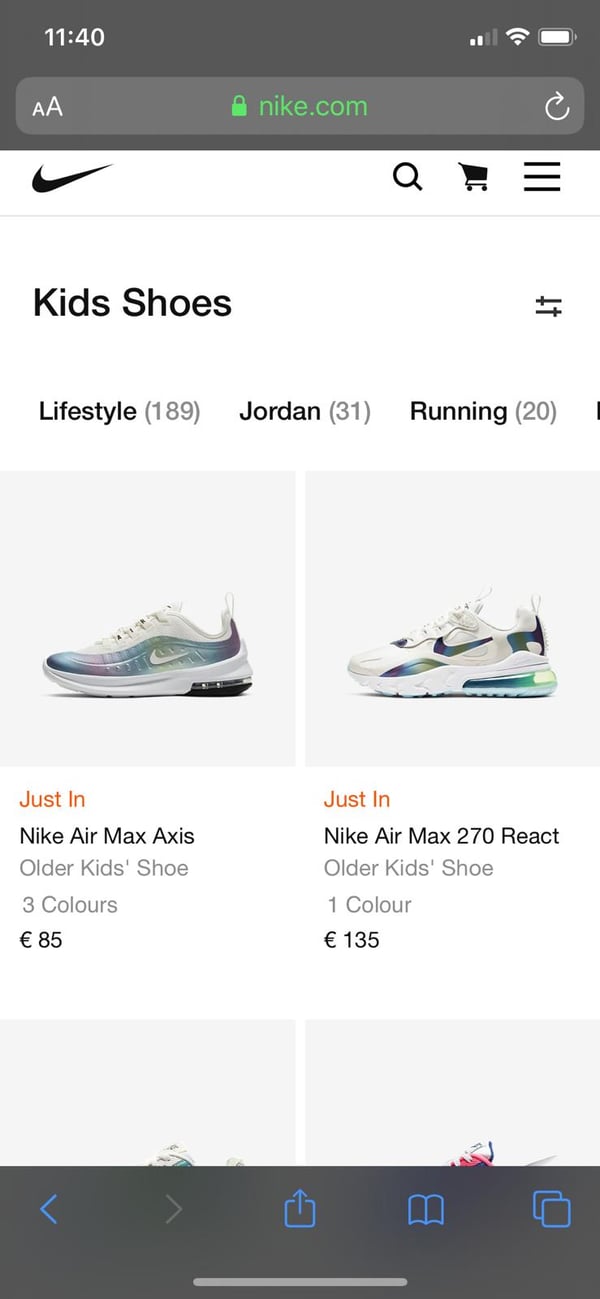
Going one step further you can create segments-within-segments that would look something like iPod vs. android vs. iPad.
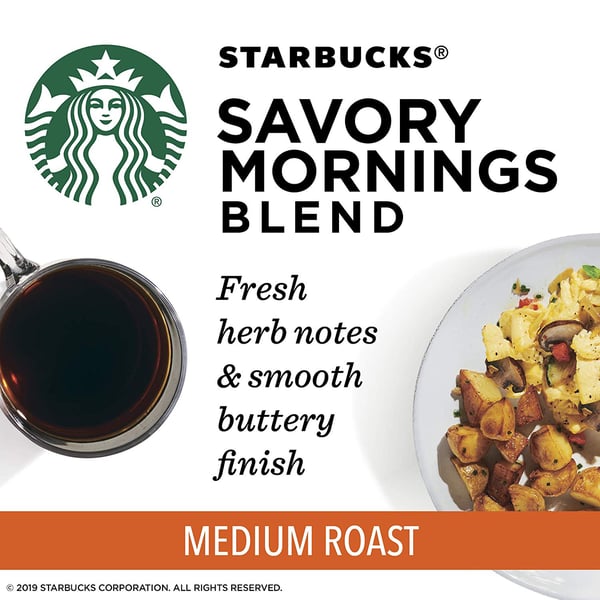
Another way to carry out behavioral segmentation is to segment your campaigns into occasion purchasing ads. This will help target relevant customers.
Starbucks, for example, targets the morning customer looking for breakfast in this ad above. But of course, every Starbucks campaign is occasion-based from their Pumpkin Spiced Lattes that I now associate with Autumn, to the mocha Frappuccinos I drink in the summer.
For occasion-based purchasing you should be asking: when are your different segments likely to buy from you?
Depending on what you sell, your answers will probably be less as all-encompassing as Starbucks. But that’s a good thing. The more you can narrow down your appeal, the more personal you’ll become (are you selling bikinis for summer holidays, engagement rings, or trying to appeal to the morning commuter?).
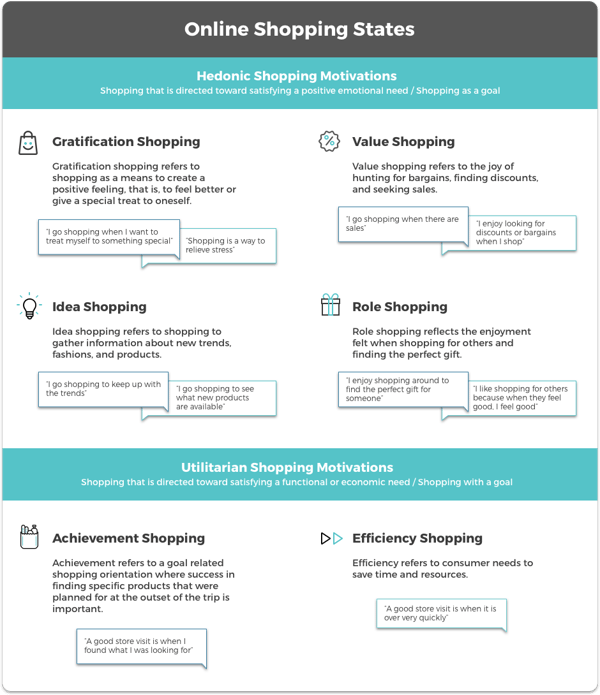 Hedonic vs. utilitarian shopping states create customer personas by analyzing their on-site behavior. Have a look at this post for more on shopping states.
Hedonic vs. utilitarian shopping states create customer personas by analyzing their on-site behavior. Have a look at this post for more on shopping states.
Shopping personas are also easier to find if you have a proper customer segmentation strategy at the tips of your fingers. Price-conscious shoppers, for example, can be found by tracking on-site behavior.
For example, imagine you have a customer who:
This shopping behavior is easy to track, to which you could group these customers into a “price-conscious” shopper segment.
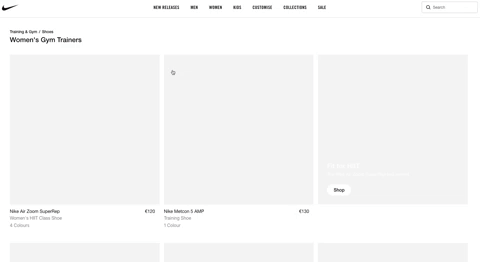
Goal-oriented shoppers are easy to spot - they’re the ones on a mission. If I’m looking for a specific gym shoe, I’m going to use a webshop’s search bar, filter on my size and color preference, and most likely buy that single product quickly if it suits all my needs.
Alternatively, you may have a segment of “all-in” shoppers: the ones who browse the entire product category before making a decision. They usually look for information on the entire webshop, so to nurture this segment you should send them relevant nudges that will optimize their journeys.
Depending on your brand, customer segmentation will reveal all sorts of shopping personas. These are interesting when you want to predict future behavior to optimize your personalization and targeting.
Customer segmentation can be carried out on a basic level. But if you want to go one step further and delight your customers, you should be segmenting according to their psychographics and purchasing behavior.
Where demographics gives you an overview of different customer profiles and their shopping similarities, psychographics gives you a peek into their psychology.
Supplanting your demographics and psychographics with on-site behavioral segmentation is key.
Of course, these customer segmentation examples will differ depending on your webshop, brand, and audience.
But it’s a good start!